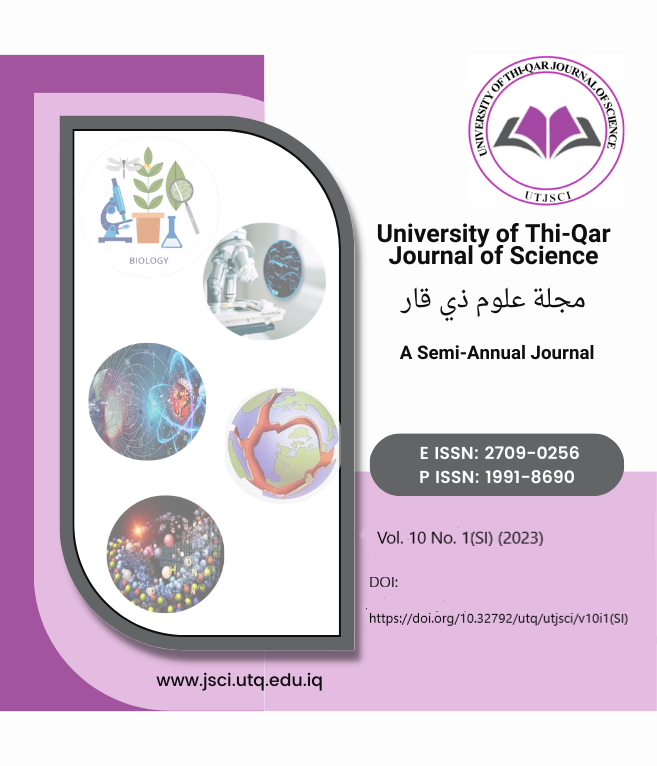Synthesis, Characterization, antimicrobial activity and Computational Study of New 3-(1-methyl-2-((1E,2E)-3-phenylallylidene)hydrazinyl)-5-phenyl-4H-1,2,4-triazole with some transition metal ions
DOI:
https://doi.org/10.32792/utq/utjsci/v10i1(SI).1008Keywords:
ligand, complexes, characterization, antimicrobial, Triazoles, heterocyclicAbstract
Current study generated complexes of the novel heterocyclic ligand 3-(1-methyl-2-((1E,2E)-3-phenylallylidene) hydrazinyl)-5-phenyl-4H-1,2,4-triazole with Cr(lll), Co(ll), and Cu(II). Using techniques including 1H-NMR, mass spectrometry, FT-IR, and elemental analysis, scientists could determine key characteristics of the novel ligand. As spectra, Fourier transforms infrared (FTIR), magnetic susceptibility, atomic absorption, and conductance measurements were used to describe ligand complexes in contrast. Bacteria were used in an assay to test the antibacterial activity of each novel compound (Staphylococcus and Escherichia coli). Quantum chemical simulations performed using the DFT approach at the B3LYP/6-311++G level complemented the experimental data. Using Hyperchem 8.02 and the PM3 approach, this study hasdetermined the ligand's electrostatic potential and its complexes' geometries. The electrostatic potential that reveals useful data about the location's complexity.
Downloads
Published
Issue
Section
License
Copyright (c) 2023 University of Thi-Qar Journal of Science

This work is licensed under a Creative Commons Attribution 4.0 International License.













